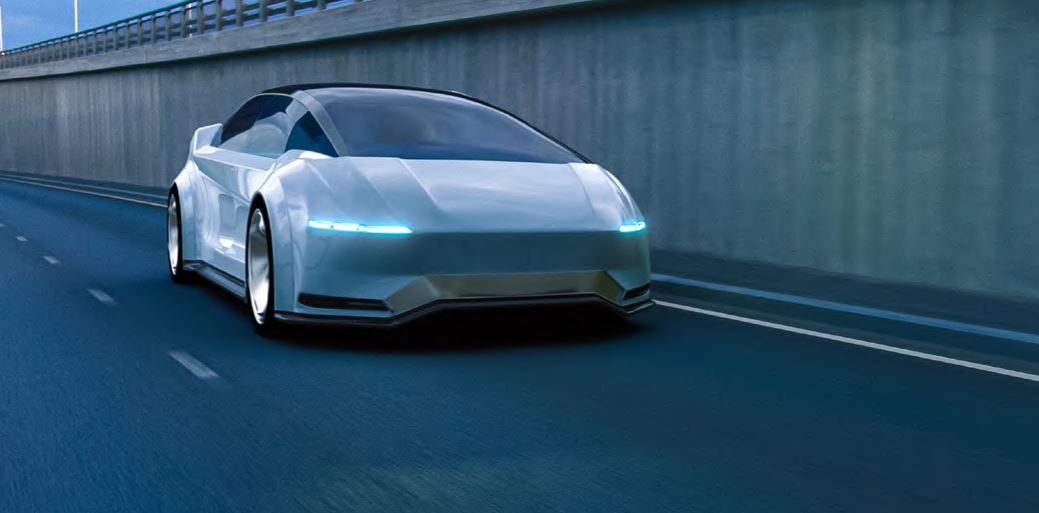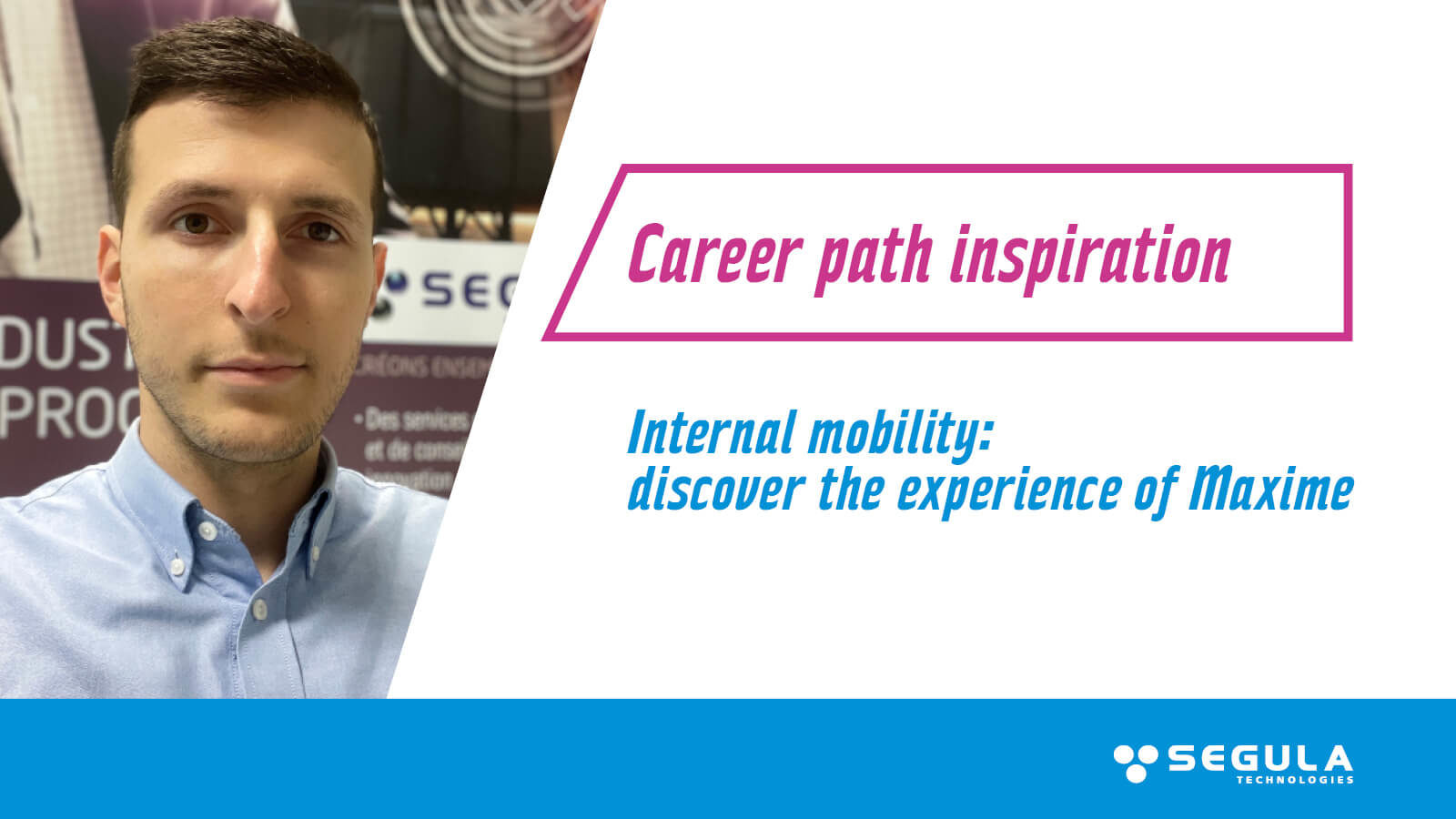“Even better: users will have the ability to add new features and services throughout the vehicle’s life, with regular updates to always benefit from the latest software versions thanks to Over-The-Air (OTA) technology. We are working on this to enhance the reliability and safety of these technologies.”
The source of data for connected vehicles
And connectivity doesn’t stop at the vehicle itself. To be aware of traffic conditions on their route, users can rely on information from other vehicles on the path. “Take for example”, suggests Julien Fouth, “a navigation system capable of providing an alternative route when the originally planned route is congested. This is possible thanks to preceding vehicles that have detected the traffic jam and communicate in real-time to the cloud.”
Connected vehicles are also able to exchange information with their environment, specifically with certain road infrastructures: a tunnel, an intersection, a traffic light, etc. “All of this already exists,” he clarifies, “but not in real-time.”
There is still a lot of latency in the cloud. However, given how quickly computing power is evolving, we can remain optimistic about improving user safety with more immediate information.”
Not all autonomous vehicles are truly autonomous
Often, driver assistance is confused with true autonomous driving, which does not yet exist. The SAE (Society of Automotive Engineers) distinguishes five levels of automotive autonomy. “Level 1 involves simple driver assistance, such as the beep that sounds when approaching an obstacle,” explains Julien Fouth. “Level 2 is considered semi-autonomous driving, where the vehicle can be controlled by features like adaptive cruise control. Level 3, known as conditional autonomous driving, allows a vehicle to park itself, with control over both longitudinal and lateral movement. Level 4 vehicles are autonomous in structured environments; these exist today. Level 5 vehicles handle everything completely autonomously but are still under development.”
The essential features of the autonomous vehicle
To clarify, what is expected from an autonomous vehicle? It must be capable of perceiving its environment, meaning it should be able to see, hear, and know where it is located just like a human driver.
To achieve this, the autonomous vehicle is equipped with a range of sensors, such as cameras, radars, or lidars, which must work together to understand all situations. These components need to be integrated into a single temporal and geometric framework to merge their data and improve performance. “This step of environmental perception by the autonomous vehicle is crucial,” says Julien Fouth. “We differentiate between the vertical perception of objects,such as pedestrians, cyclists, and motorcyclists, and the horizontal perception of road signs, such as crosswalks and solid lines. Different sensors are used for each!”
Once an object is perceived, it needs to be positioned on a map. Working with high-definition mapping is complex due to the vast amount of information. “Moreover, the autonomous vehicle operates based on dynamic mapping,” he emphasizes, “to know what is happening in front and behind it. Additionally, the vehicle uses satellite data (GPS…).
Our challenge is to correlate the information from the vehicle’s sensors with that from the satellites, with centimeter-level accuracy!”
Make decisions and act
In addition to perceiving its environment, the autonomous vehicle must also be able to make decisions: stopping in front of an obstacle, manoeuvring around it, overtaking the car in front, or even turning around. The onboard technologies will also be able to take into account the driver’s preferred style of driving, whether it’s sporty or eco-friendly. This consideration translates into rules for longitudinal and lateral control, defining instructions for engine torque, braking, or steering angle control.
“When taking into account the driving behaviour of drivers, we enter into significant complexity,” observes Julien Fouth. “The autonomous vehicle must operate alongside users with highly varied driving habits while also adhering to traffic laws. A human driver is aware of what might happen with other drivers. This is where artificial intelligence plays a role in assessing different situations. We are talking about situational intelligence.”
To then take action, the autonomous vehicle must do so safely. “In this context, it must adhere to progressive rules. Control instructions cannot be applied in an all-or-nothing manner; They must be gradual, for the comfort and safety of the vehicle’s occupants. This is the challenge of interactions between the chassis and the transmission system, to replace the driver’s hands and feet.”
Modelling and Artificial Intelligence
To make these functions work together, the automotive industry uses both traditional computational tools, notably to model vehicle behaviour, and artificial intelligence in the quest for full autonomy. “In this context, artificial intelligence needs to be able to explain its decisions and actions,” insists Julien Fouth, “which it currently cannot do. SEGULA
Technologies is working precisely on this ‘explainable artificial intelligence’.”
More broadly, the company has specialised in the entire range of connected and autonomous vehicle offerings, from design to industrialisation: developing ADAS (Advanced Driver Assistance Systems), algorithms to manage sensor data, both individual and combined, designing decision modules of varying complexity, and conducting virtual validation activities… Virtual validation is one of SEGULA Technologies’ strong areas of expertise. In the case of an autonomous vehicle, to test all its functions in every possible situation, it would need to drive millions and millions of kilometres over years. This is economically very costly, if not impossible for manufacturers. Therefore, validation through the generation of various driving scenarios is THE solution.
A virtual solution mastered and implemented by SEGULA Technologies. “Our services benefit from ongoing monitoring of the stateof-the-art in autonomous mobility,” concludes Julien Fouth. “We work with a startup ecosystem to stay abreast of sector innovations. This way, we are better equipped to support our clients’ needs and to be ‘drivers’ of the vehicles of tomorrow.”
This interview is taken from the mag auto, which you can download below.







 FOR A BETTER EXPERIENCE
FOR A BETTER EXPERIENCE